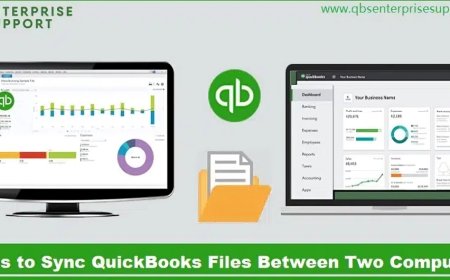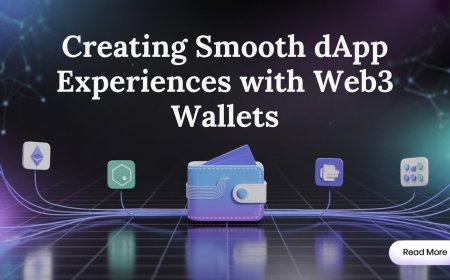Mortgage Payment Software: Powering the Future of Loan Servicing
Learn how mortgage payment software automates servicing, improves borrower experience, and ensures compliance for lenders and servicers in 2025.
As mortgage lending grows more competitive and tightly regulated, lenders and servicers are facing intense pressure to modernize their operations. The need for streamlined workflows, real-time data, and enhanced borrower experience has made mortgage payment software one of the most vital tools in the industry today.
This article offers a deep dive into mortgage payment software: how it works, what features define the best systems, and why its essential for every lender or servicer operating in 2025.
Understanding Mortgage Payment Software
Mortgage payment software is a loan servicing solution designed to handle all post-closing activities involved in managing a mortgage. These tasks include processing monthly payments, managing escrow accounts, calculating interest, sending statements, and staying in compliance with federal and state regulations.
While loan origination software handles the initial stages of the mortgage process (application to approval), mortgage payment software supports the repayment lifecycle from closing to final payoff.
What Makes It Essential in 2025?
1. Digital Borrowers Demand Digital Tools
Todays borrowers expect self-service portals, mobile apps, and payment flexibility. Mortgage payment software delivers these featuresallowing borrowers to stay informed and in control.
2. Regulatory Risk Has Increased
CFPB audits, RESPA requirements, and state-level rules around communication, escrow, and disclosures have made compliance harder. Software keeps track of timelines and auto-generates required documents.
3. Manual Servicing No Longer Scales
If youre managing hundreds or thousands of loans, its impossible to scale using spreadsheets or disconnected systems. Automation cuts costs, improves speed, and reduces human error.
4. Lender Performance Is Scrutinized
Investors and agencies expect fast, transparent reporting. Software offers real-time data to assess delinquency rates, payment performance, and risk exposure.
Key Features of Mortgage Payment Software
1. Payment Automation
Processes ACH, debit, credit card, and mobile wallet payments. Supports one-time and recurring payments. Sends confirmations automatically.
2. Real-Time Loan Accounting
Applies funds to principal, interest, and escrow instantly. Provides current loan balance and payment breakdowns to borrowers and staff.
3. Escrow Tracking & Disbursement
Tracks tax and insurance obligations. Makes timely payments and adjusts monthly escrow amounts based on annual analysis.
4. Compliance Management
Automatically generates and tracks delivery of federally required notices and statements, including late notices and annual escrow disclosures.
5. Statement Generation
Creates digital or print-ready mortgage statements, escrow summaries, and tax documents like the 1098 form.
6. Delinquency Handling
Identifies missed payments, applies late fees per policy, and starts collections workflows when necessary.
7. Borrower Self-Service Portal
Secure login where borrowers can view history, make payments, change settings, and access documents.
8. Mobile Optimization
Supports responsive design and app-based servicing for borrowers on smartphones and tablets.
9. Integration Capabilities
Connects with loan origination software, accounting tools, CRMs, investor portals, and other fintech infrastructure.
Key Benefits for Lenders and Servicers
Increased Efficiency
Automates repetitive servicing taskssaving time, reducing staffing costs, and eliminating manual errors.
Improved Compliance
Ensures proper notice generation, tracks every communication, and stores audit-ready logs to support regulatory defense.
Lower Risk
Minimizes delinquencies through automated alerts, escalations, and hardship support workflows.
Enhanced Borrower Experience
Faster payment processing, fewer errors, and more control for borrowersleading to better retention and fewer support calls.
Better Data and Reporting
Gain real-time insights into portfolio health, delinquency trends, escrow balances, and repayment progress.
Borrower Benefits
Mortgage payment software also enhances the borrower's side of the equation:
-
24/7 Account Access
Borrowers can manage payments, download statements, and update info any time. -
Simplified Escrow Transparency
Real-time tracking of escrow balances and disbursements improves trust and reduces confusion. -
Fast Support Access
In-portal messaging or helpdesk access allows quick issue resolution without calling. -
Payment Flexibility
Pay with a variety of methods and frequenciesset auto-pay, pay early, or adjust settings as needed.
The Mortgage Servicing Lifecycle: Software in Action
Lets look at a full payment cycle with software in place:
-
Onboarding
Loan is added to the system. Borrower receives login credentials and welcome instructions. -
Auto-Pay Setup
Borrower enables recurring payments via portal or app. -
Payment Processing
Monthly funds are collected automatically. Software splits funds between interest, principal, and escrow. -
Escrow Management
Escrow pays upcoming tax/insurance bills. Surplus or shortage is calculated and monthly payment adjusted. -
Statement Issuance
Digital or paper statements are sent. Borrower and servicer dashboards update in real-time. -
Compliance Checks
If payment is missed, the system applies fees and triggers RESPA/CFPB-compliant notices and communications. -
Reporting & Monitoring
Servicers receive daily reports on payments, delinquencies, escrow activity, and account changes.
Leading Platforms in 2025
| Software | Servicer Type | Highlights |
|---|---|---|
| Black Knight MSP | Enterprise-level | Full servicing suite, top-tier compliance |
| Sagent LoanServ | Mid-sized lenders | Real-time data, borrower-first design |
| LoanPro | Fintechs | Custom rules engine, developer-friendly |
| FICS Mortgage Servicer | Banks/Credit Unions | Cost-effective, reliable automation |
| Mortgage Automator | Private lenders | Fast deployment, LOS + servicing combo |
| Nortridge | Mixed lending portfolios | Flexible and highly configurable |
Selecting the Right Mortgage Payment Software
When evaluating vendors, ask the following:
-
Does it support your loan types and servicing model?
-
Can it scale as you grow your loan portfolio?
-
Does the borrower portal offer mobile optimization and self-service tools?
-
What compliance tools are included?
-
How easily does it integrate with your current tech stack (LOS, accounting, investor reporting)?
-
Whats the onboarding and customer support process?
Tips for Implementation
Here are some best practices to ensure a smooth rollout:
-
Audit Your Existing Data: Clean up loan records and escrow details before migration.
-
Run Sandbox Tests: Simulate real payments, delinquencies, and escrow events before going live.
-
Train Your Team: Focus on compliance, data entry, and borrower support workflows.
-
Monitor Metrics: After launch, track KPIs like average payment time, borrower satisfaction, delinquency rates, and support call volume.
-
Engage Borrowers: Use email campaigns and portal walkthroughs to help them transition and understand new features.
Future Trends in Mortgage Payment Technology
Looking ahead, the mortgage payment space is set for continued innovation:
Instant Payment Settlements
With FedNow and real-time rails, loan payments will clear instantlyimproving cash flow and reducing borrower stress.
AI-Powered Assistance
AI will help detect early delinquency risk, recommend retention strategies, and even assist borrowers through chatbots.
Smart Escrow Adjustments
Machine learning models could predict changes in tax and insurance costs to better prepare for escrow shifts.
Embedded Payment Interfaces
Expect payments inside home apps, banking apps, and smart deviceswithout needing to log into a separate portal.





































